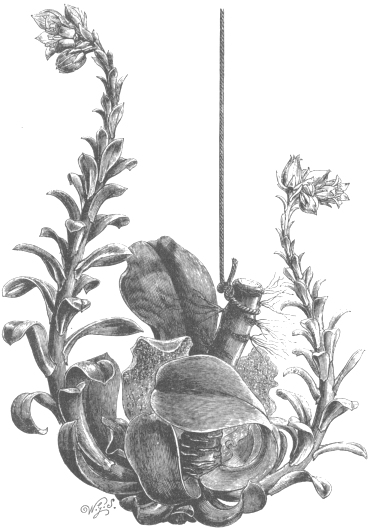[page] 805
GROWTH UNDER DIFFICULTIES.
PLANTS often set us mortals an example we should do well to follow. When adversity comes they are not, as some of us are, overwhelmed and reduced to the inaction of despair; they seem to act on the principle that a difficulty is a thing to be overcome, and if they cannot effect it in one way they will in another. This great pliability of plant-life—this adaptation to varied conditions and circumstances, strikes us ever day, and never more forcibly perhaps than in reference to the various methods of treatment applied to the Grape Vine. It might have been thought that the main lines of practice were sufficiently laid down by this time, but experience shows how great is the conflict of opinion upon a point of everyday practice. Experience also shows that, disregarding extreme and exceptional cases, the general results are much the same. Skill and care go for much—for very much; but all the skill and all the care would avail nought if the plant did not lend itself to the practitioner, and meet his advances much more than half way.
The following communication, with which we have been favoured by Mr. Darwin, affords us another illustration of similar character:—
"The enclosed branch of Cotyledon (Echeveria stolonifera was cut from a plant growing in my greenhouse, and was suspended on August 10 in my study, which is a dry room, and in which a fire burns most of the year. It has sent out two fine flowering stems which, from the position in which the branch was hung, have bent upwards [as may be seen in the figure]. They have now (December 6) begun to flower. You will see that the plant has sent out a number of small roots. I may add that the specimen weighed on September 1 45.46 grammes, on December 6 36.94 grammes, so that its growth has continued in spite of a considerable loss from evaporation. Charles Darwin, Down, Beckenham."1
1 Darwin's letter is set within an article by the editor of the Gardeners' Chronicle, M. T. Masters, which can be seen in the image view.
The bracketed words 'as may be seen in the
figure' were added by the editors. See the important notes to this letter in Correspondence vol. 25, p. 514.
[page] 807

Fig. 159.—COTYLEDON (ECHEVERIA) STOLONIFERA. (SEE P. 805).
[This woodcut was made and inserted by the editor of Gardeners' Chronicle.]